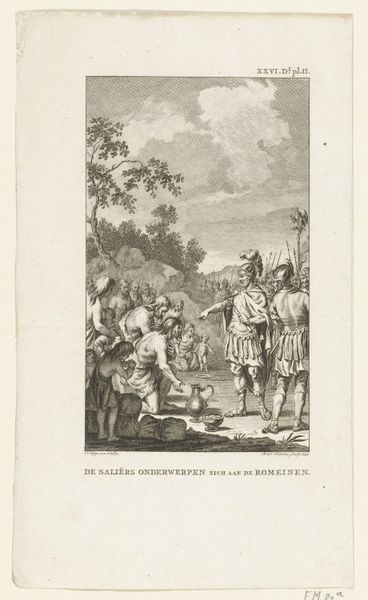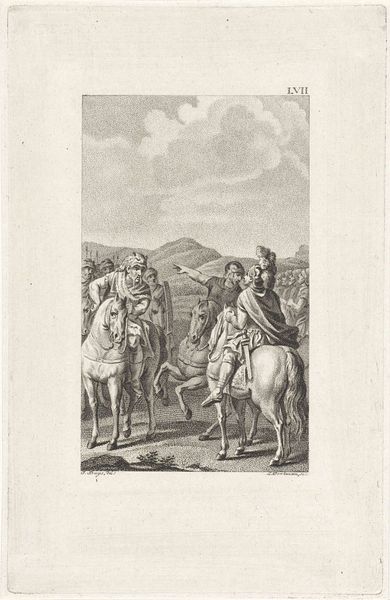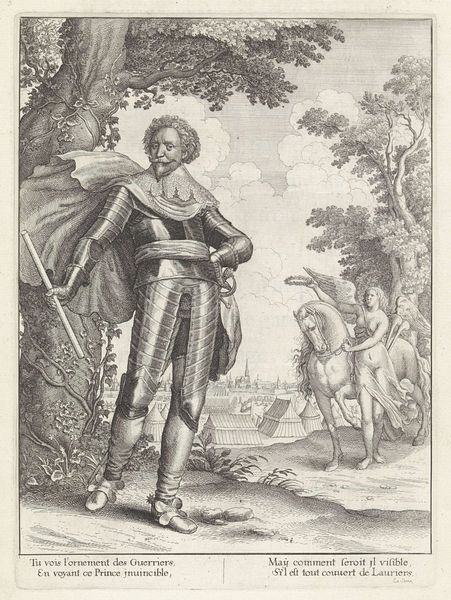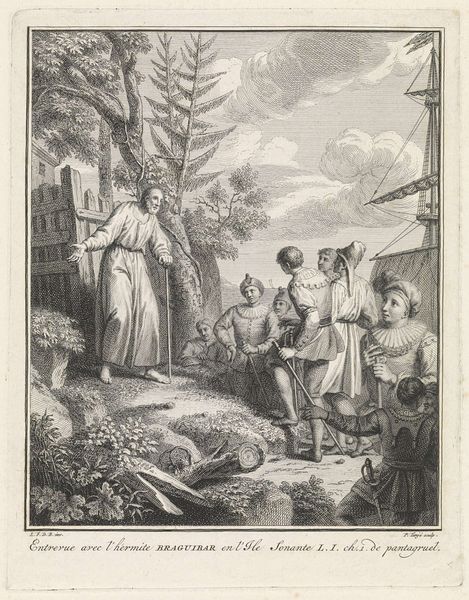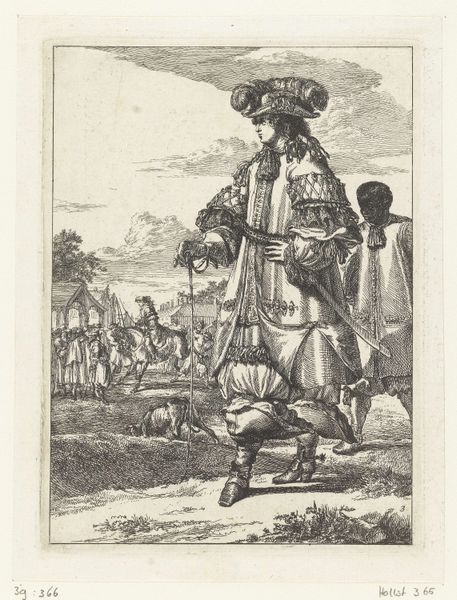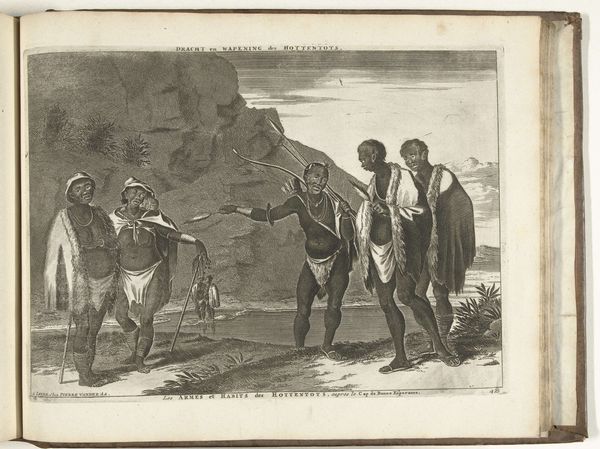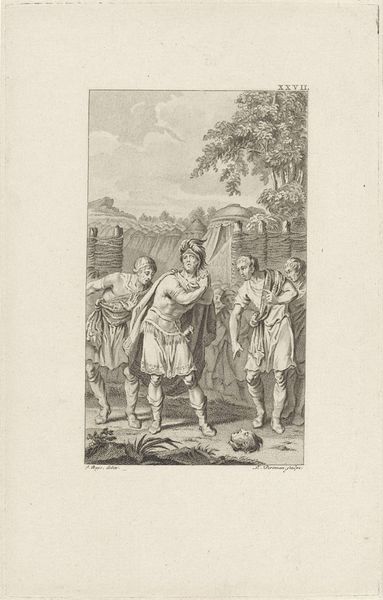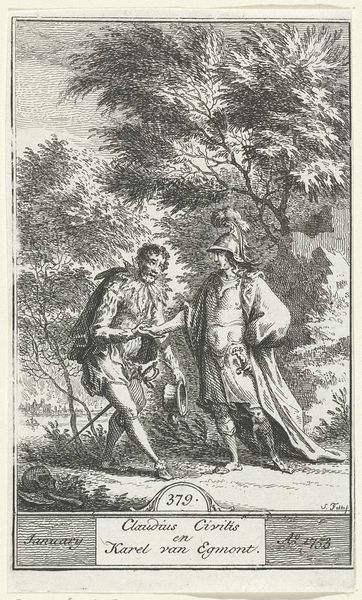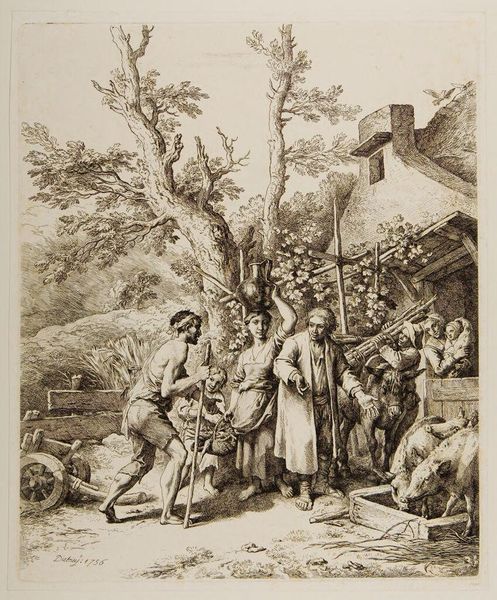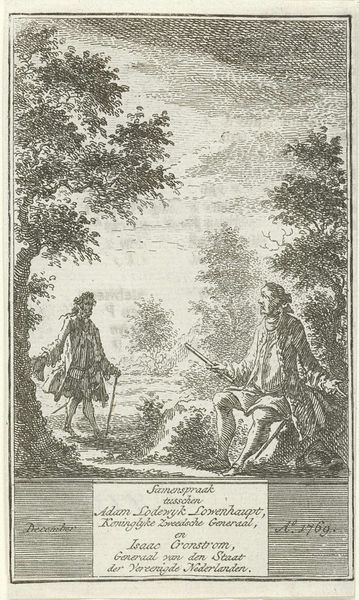
print, engraving
#
portrait
#
african-art
# print
#
old engraving style
#
genre-painting
#
history-painting
#
engraving
Dimensions: height 290 mm, width 170 mm
Copyright: Rijks Museum: Open Domain
Curator: This engraving by Jan Caspar Philips, created around 1727, is titled "Kleding van de Khoikhoi," or "Clothing of the Khoikhoi." Editor: It has an almost stark quality. The figures stand out against a rudimentary landscape—their expressions, even in the print, are incredibly engaging, as are their costumes. There is an unmistakable element of depiction on display. Curator: Indeed, the clothing is the focus. Philips likely aimed to document the traditional garments. Note the use of beads, the capes draped across their shoulders, and those coiled anklets. This visual record then gains symbolic importance. Editor: This “record” also operates as a colonial gaze. How are the people positioned? And what is the social and power dynamic communicated? This becomes visible when their posture is juxtaposed with that of the background figures that seem to be almost crouching. This imagery has the capacity to communicate otherness, doesn’t it? Curator: It absolutely does. We should ask: what collective visual memories does this then tap into, consciously or unconsciously? The artist's composition creates a dynamic through contrast. Philips certainly wasn't a neutral observer; what were his intentions when crafting this narrative of "otherness?" How were they meant to read it? Editor: And importantly: who was his audience? Understanding the social context reveals the broader intersectional narrative. What purpose did these kinds of images serve during that time? Were they circulated, studied and discussed, shaping perception? It's less about pure anthropology and more about solidifying a political, racial hierarchy through images, no? Curator: Undoubtedly. The print underscores not merely cultural depiction but power structures operating through visual representation. The garments are no longer neutral elements but instead become elements embedded within a colonial visual archive. The image then works as more than merely a documentary tool. Editor: Looking closely, you realize the artist has set up various layers: dress as emblem, setting as backdrop and both intertwined into a staged social encounter. Recognizing the political dynamics at play helps unpack how images continue to affect our own readings. Curator: That's so very critical: recognizing and decoding those colonial scripts imbedded into images. Understanding how a single engraving taps into complex stories of cultural contact remains vital. Editor: The discussion that ensues should involve unraveling this entanglement—an important step toward building equitable, decolonized modes of spectatorship in how we approach art.
Comments
No comments
Be the first to comment and join the conversation on the ultimate creative platform.

